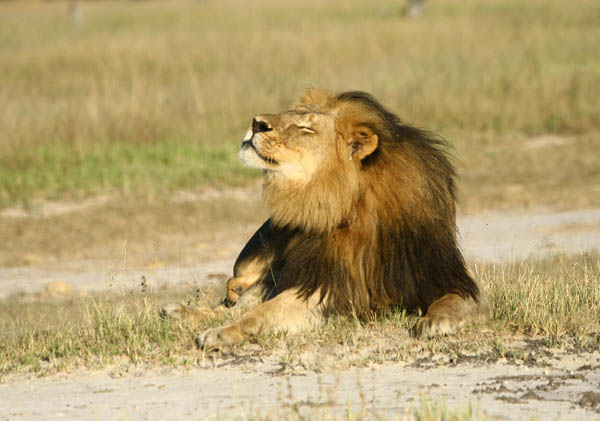News
What has the killing of Cecil the lion got to do with terrorism? Not what you might think, explains David Macdonald with the publication of a new WildCRU paper as part of the Oxford Martin School’s Natural Governance programme
What has the killing of Cecil the lion got to do with terrorism? Not what you might think, explains David Macdonald with the publication of a new WildCRU paper as part of the Oxford Martin School’s Natural Governance programme: people bond together for many purposes where they value a shared goal more than their own individual well-being. Think of the dedicated cooperation of members of a rugby team. A much more striking example is the case of suicide terrorists who are so bonded to their cause that they value it above their own lives – exactly how this bonding works has been the research topic of our collaborator Professor Harvey Whitehouse. Harvey, together with Professor Dominic Johnson and myself lead the Oxford Martin School’s programme on Natural Governance with the purpose of researching how to use evolutionary understanding of human nature better to manage human affairs, including biodiversity conservation – in short, trying to identify where an evolutionary understanding, be it ecological or behavioural, suggests how the human enterprise could better go with the grain of nature, rather than against it.
Following the killing of Cecil the Lion I began corresponding with some 14,000 people around the world who had taken an interest in our lion conservation work and made donations to it. Soon it was clear that they were exceptionally motivated by the episode and seemingly very bonded to Cecil, to the WildCRU and perhaps, as I suggested in a paper entitled ‘Cecil: A moment or a movement?’ to lion conservation as a cause. Harvey saw similarities in the power of commitment amongst our supporters to the fusion he had been studying in terrorism, although the motivations of the people could scarcely be more different with WildCRU’s correspondents being dedicated to wildlife and conservation. We therefore began a study, led by Dr Michael Buhrmester, an expert in group psychology, and the results are just published. Our paper is entitled “How moments become movements: Shared outrage, group cohesion, and the lion that went viral” and has appeared in an inter-disciplinary Special Issue of the journal Frontiers in Ecology and Evolution – edited by Dr Bob Montgomery, a predator expert who is Research Associate at WildCRU.
We examined the psychological factors that caused those affected by the “Cecil moment” to experience a sustained feeling of “identity fusion” (i.e., a strong, family-like bond) with the WildCRU (something that certainly makes us proud and grateful). Our findings take the study of identity fusion into the realm of conservation for the first time, and show how viral moments of shared outrage, such as in the case of Cecil, can serve as the spark for developing widespread and sustained support toward conservation goals. Such factors may also play key roles in other social movement contexts as well. In addition, our findings are the first to show how identity fusion to a group increases over time as a consequence of a deeply dysphoric event (in this case the death of Cecil). Increasing our understanding of how fusion arises is important for developing empirically-grounded strategies to steer fusion’s motivational power toward positive, peaceful outcomes (e.g., increasing biodiversity conservation efforts) and away from nefarious ones (e.g., suicide terrorism).






